Weaning is such an important time for setting up healthy eating habits. And first weaning foods can help to ‘train’ your baby to develop tastes and familiarity with foods you want them to eat in later life.
Babies are born with sweet tooths
And their food for the first six months of life is sweet milk. So weaning provides a window of opportunity to expose your baby to new tastes, including those more bitter-tasting foods, like vegetables. The benefits of eating lots of vegetables are well known, but they can be challenging for children to like.
First Weaning Foods- Have you thought of ‘Vegetable First’ Weaning?
Therefore, although you can technically start your baby on solids with any food type, I believe taking a vegetable-led approach is worthwhile. If you can get your baby to like vegetables and especially those more challenging to like varieties, then things can only get easier for your baby taste-wise!
READ MORE: 5 perfect first foods for babies (including baby rice!)
The Research behind vegetable-first weaning
University College London conducted a study in 2015 looking at the effects of using a ‘vegetable first’ approach. Here, they randomly assigned 60 mothers to either a ‘vegetable first’ or control group. They advised the ‘vegetable first’ group to introduce five different types of vegetables as single flavours for the first 15 days of weaning; the control group were not given this advice.
After one month, researchers assessed how much of an unfamiliar vegetable and fruit the babies ate. Babies in the ‘vegetable first’ group ate more of an unfamiliar vegetable than infants in the control group, and they also seemed to like them more. There was no difference in how they appeared to enjoy the fruit.
This suggests that introducing vegetables instead of fruit as first foods may be a good way of improving vegetables’ acceptance. On the other hand, starting with fruit first or vegetables mixed with fruit might be a lost opportunity because babies tend to accept fruit either way.
Three Principles of Vegetable First Weaning
Repetition
Offer a different vegetable every day initially and then more than one type per day, keep rotating through the various types and serve in multiple ways. It doesn’t matter if you are doing a mixture of spoon-feeding or 100% baby-led weaning.
Perseverance
Your baby might not like broccoli the first time, but if you keep offering broccoli regularly, they will most likely learn to like it.
Variety
Don’t offer just sweet root vegetable like carrots, sweet potato and butternut squash. Make sure you offer dark green vegetables and non-sweet vegetables as well.
PUTTING VEGETABLE FIRST WEANING INTO PRACTICE
Pick five vegetables
Choose those that you like to cook and eat but make sure that you have a variety. Don’t just offer sweet root vegetables.
Choose an approach
Decide whether you’re going to offer these as purée, finger foods or both.
Pick a meal
Decide what time of the day you’re going to offer them. A good time is generally after your baby wakes from their first nap and after they’ve had their usual milk. Just wait about thirty minutes before offering food.
Keep offering
Offer a different vegetable from your selection every day for five days and repeat the cycle once or twice. At the end of the two weeks, your baby has been exposed to each vegetable 2-3 times.
Move on
Then move on to other foods, including foods high in iron like fortified cereals, meat, fish, lentils and beans. And foods that are potential allergens.
READ MORE: Step-by-step guide to introducing potential allergens
Vegetable-first weaning- an example
| Day 1 | Day 2 | Day 3 | Day 4 | Day 5 |
| Green Beans | Turnip | Courgette | Broccoli | Cauliflower |
| Day 6 | Day 7 | Day 8 | Day 9 | Day 10 |
| Green Beans | Turnip | Courgette | Broccoli | Cauliflower |
| Day 11 | Day 12 | Day 13 | Day 14 | Day 15 |
| Green Beans | Turnip | Courgette | Broccoli | Cauliflower |
First Weaning Foods: Purée, finger food or both?
If your baby is under six months, I advise starting with purée vegetables and adding vegetable finger food at six months.
If your baby is six months when you start and is developmentally ready, then it’s OK to either go straight to finger foods or use a combined approach.
This is what a combined approach to vegetable first weaning might look like. Can you see the advantage of offering the vegetable in both forms? All the green veg look the same when they’re puréed. By providing the same vegetable as finger food, your baby learns more about the food.
LEARN MORE: Baby led weaning, spoon feeding: The great debate!
Learn more about first foods for babies and how to feed your baby up until their first birthday with my online course, Ready, Steady, Wean.



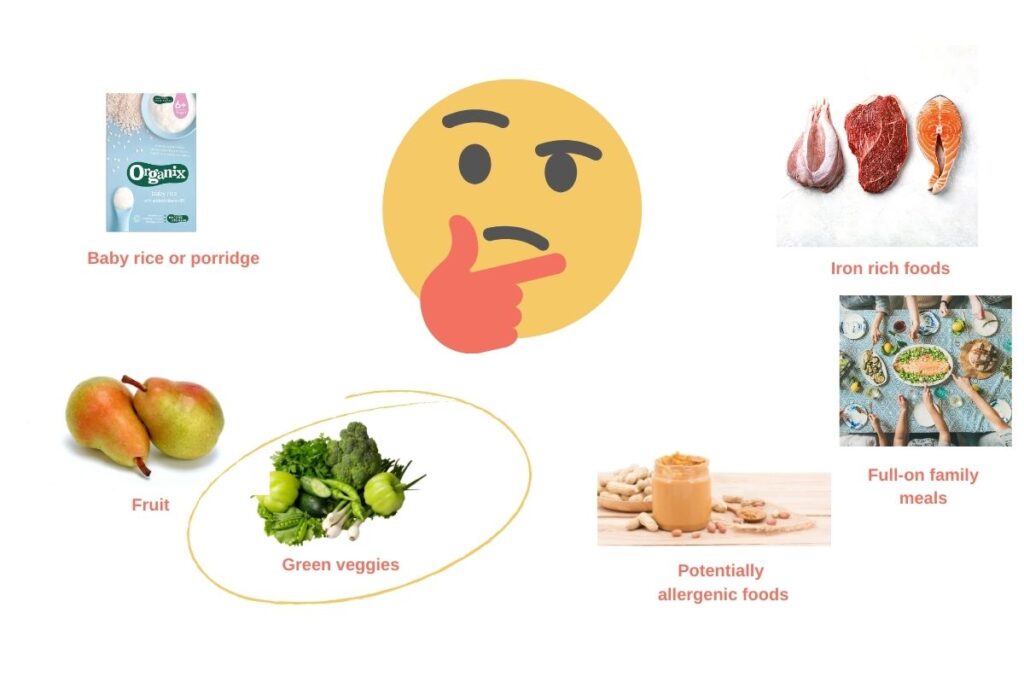
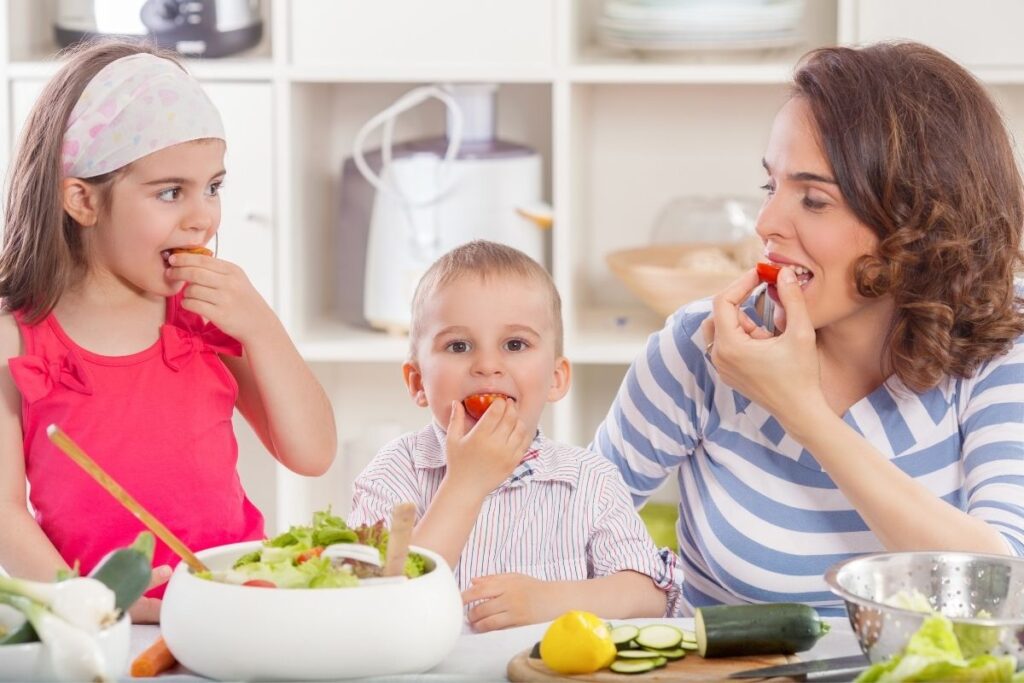
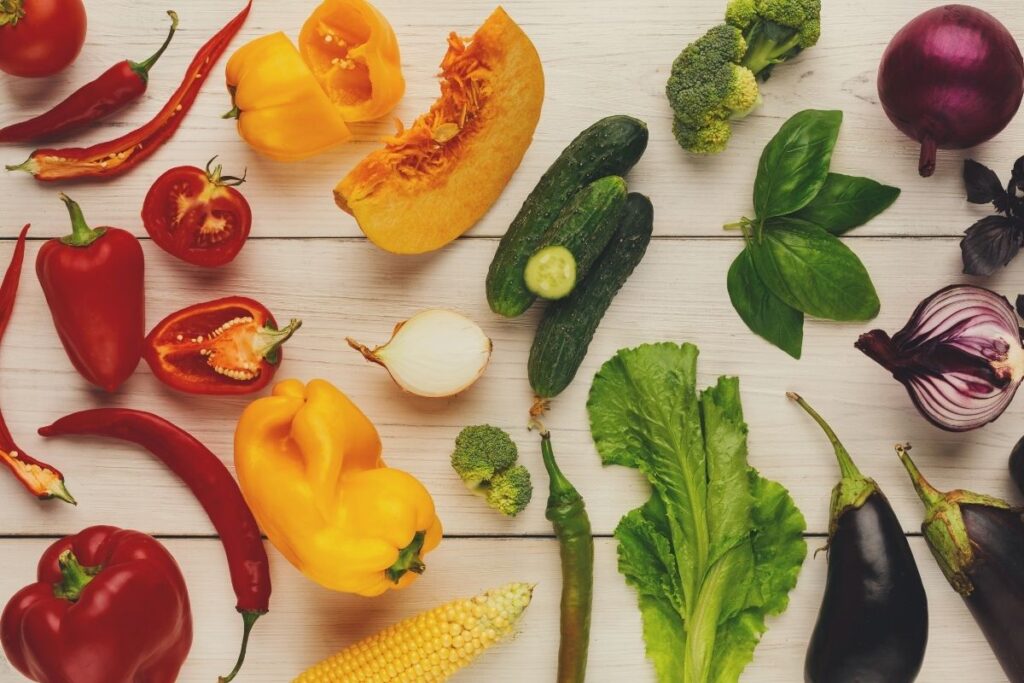
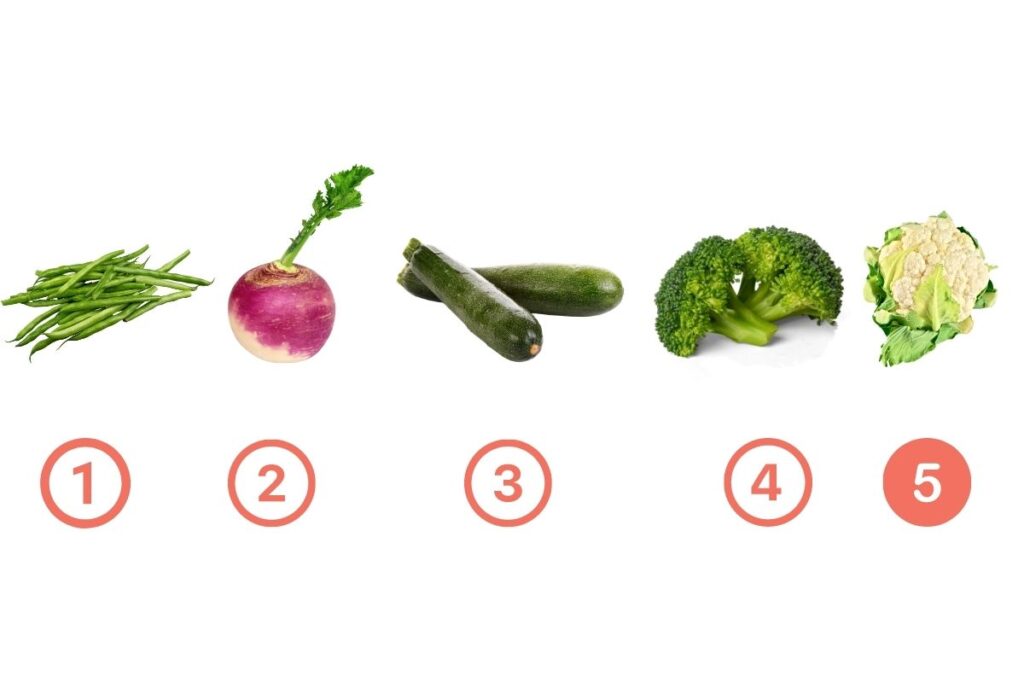
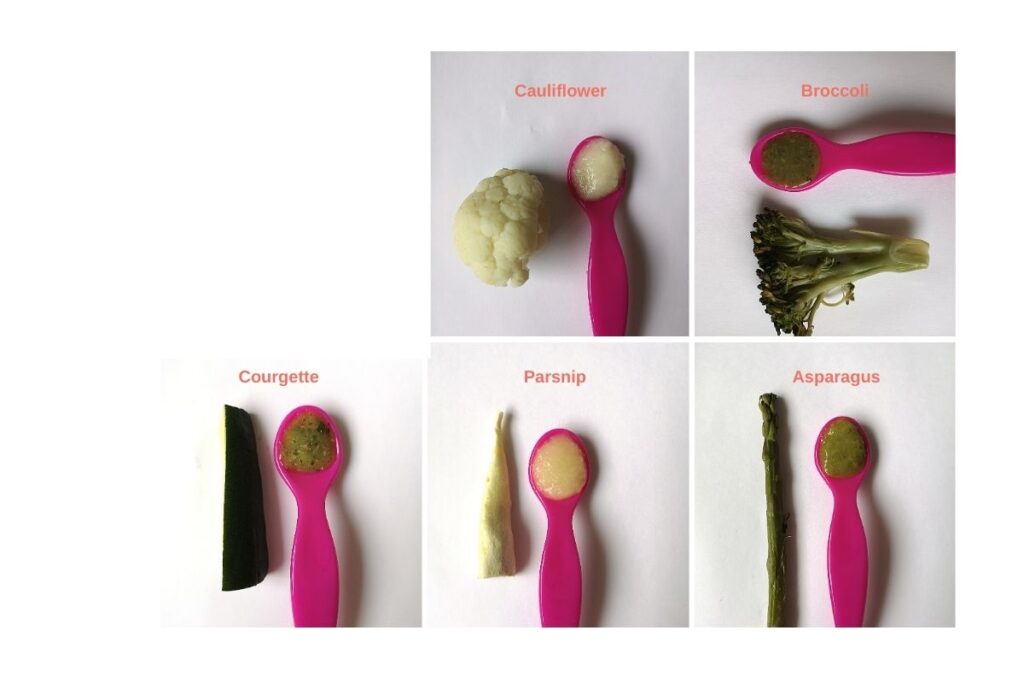





0 Comments